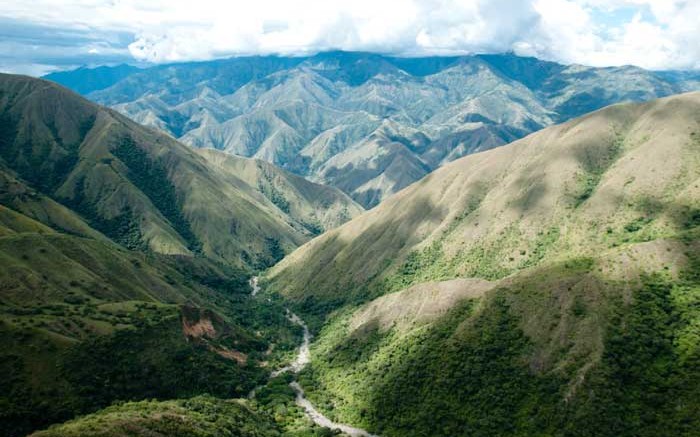After close to a year of negotiating, Continental Gold (TSX: CNL; US-OTC: CGOOF) is formalizing artisanal mining in and around its Buritica gold project in northwestern Colombia, and expects to execute subcontracts with small-scale miners there in the third quarter.
The subcontracts will allow small-scale miners to legally operate in agreed-upon areas 2 km from where the company plans to build its mine, with financial, technical and administrative autonomy under the control of Colombia’s mining and environmental regulatory authorities.
Under a law passed in July 2013, the miners can present their own technical work plan and environmental impact assessment, and be inspected independently from the titleholder.
“The objective is to have a win-win situation, where modern mining and artisanal mining can peacefully coexist,” Mark Moseley-Williams, the company’s president and chief operating officer, says in an email response to questions. “Artisanal mining is a way of life for many Colombians, and signing subcontracts of formalization will allow these miners to formalize and legally continue with their small operations.”
In the past, Moseley-Williams explains, the only way to formalize an artisanal operation within a title was for the titleholder to relinquish the part of the title where the artisanal mining was taking place, or sign “operation contracts” with the artisanal groups.
“The first case does not make a lot of sense, since you could end up with a title full of holes and without understanding the geological potential in those particular areas,” he continues. “And in the second case, the titleholder is liable for any safety incidents and environmental impacts caused by the artisanal group on the title.”
Under the law passed in July 2013, however, the titleholder can move forward with formalizing artisanal groups via subcontracts without the previous risks. Under the new law, the artisanal groups present their own technical work plans to the mining authority and their own environmental-impact assessments to the environmental authority, and will be inspected independently to the titleholder. And this means that formalized artisanal operations will comply with Colombian environmental standards.
Analysts at Dundee Capital Markets applaud the memorandum of understanding, calling the development “another step forward” for Continental.
“We believe that formalization would reinforce Continental Gold’s social licence to operate by helping to prevent conflicts in the future, as well as creating a more peaceful and environmentally superior alternative, as the artisanal miners will be monitored by the government,” Joseph Fazzini, Laurence Curtis and Kent Neale of Dundee Capital Markets conclude in a research note to clients.
Continental Gold’s Buritica project covers 591 sq. km in Colombia’s Antioquia department, in the Middle Cauca Belt. It’s a two hour drive via paved highway from Medellin.
The company expects to update the project’s resource estimate early in the second quarter. At press time, measured and indicated resources stood at 3.74 million tonnes grading 13.6 grams gold per tonne for 1.64 million contained oz. gold, 38 grams silver per tonne for 4.6 million contained oz. silver and 0.7% zinc for 55.80 million contained lb. zinc. Inferred resources added 13.33 million tonnes averaging 8.8 grams gold per tonne for 3.76 million contained oz. gold, 33 grams silver for 14.2 million contained oz. silver and 0.5% zinc for 156.50 million contained lb. zinc.
The Dundee analysts forecast that between infill drilling and underground channel sampling, they expect the company will upgrade a minimum 1.5 million oz. inferred resources into the measured and indicated categories, which would bring the project’s total measured and indicated resources to more than 3 million oz. gold.
“In addition, Continental Gold’s stepout and exploration holes have repeatedly pushed the limits of the currently defined resource envelope, and we continue to envision total mineral inventory for Buritica increasing to at least 6 million to 6.5 million gold oz.,” they write. “But with the system remaining open laterally and at depth, the longer-term growth potential could be much bigger.”
The deposit covers two major vein systems — the Yaragua and the Veta Sur — and the company expects to complete a prefeasibility study in 2015.
At the end of December, Continental submitted its environmental-impact assessment, representing the final modification to the environmental licence for surface infrastructure needed to build a mine in the Higabra valley, including processing, tailings and maintenance facilities.
The EIA was submitted to Corantioquia, the autonomous regional corporation responsible for issuing and controlling environmental permits in Antioquia. It is the same agency that approved the company’s first environmental-permit modification in August 2012, which allowed Continental Gold to build a 6 km switchback road and carry out underground development.


Be the first to comment on "Continental Gold strikes a deal with artisanal miners at Buritica in Colombia"